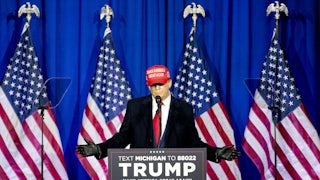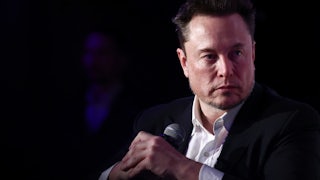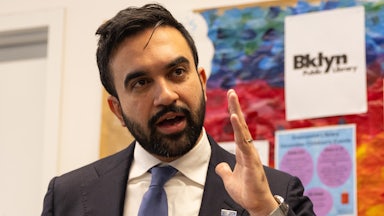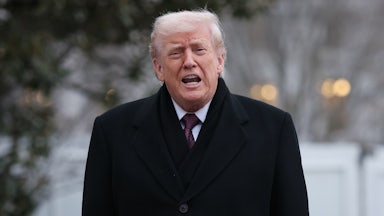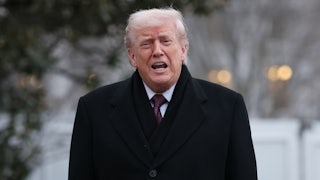It’s been a rough couple of weeks for electric vehicles. Stellantis announced this week that it’s suspending production of its all-electric Fiat 500. Volvo has ditched plans to sell only electric cars by 2030. Late last month, Ford put its plans for an electric three-row SUV on indefinite hold and announced it’d be slashing its E.V. budget to roughly $12 billion. Mercedes and Volkswagen have slow-rolled their electrification plans too.
Automakers say one reason they’re slowing down is that consumers don’t want to buy E.V.s because they worry there isn’t enough charging infrastructure. One recent study found that just four U.S. states—Delaware, Massachusetts, Nevada, and Connecticut—have an “adequate” ratio of E.V.s to E.V. chargers, meaning one charger for every nine or 10 fully electric cars. A survey on California’s E.V. charging network recently found that public chargers there are struggling to pay back capital and operating costs, stymied by the fact that not enough people are using them. The number of E.V. chargers in the U.S. has doubled since Biden took office, but there are still just 192,000 of them.
E.V. sales in the U.S., though, are still rising. In the second fiscal quarter of 2024, which wrapped up at the end of June, E.V. sales were up 11 percent over the year before. Global E.V. sales hit a record high in the second quarter, with the growth in the U.S. market outpacing the rest of the world.
There’s no one explanation for why automakers are balking on their electrification despite rising E.V. sales. For American automakers especially, the more important factor may just be the fact that they’ve hyper-specialized in hulking trucks and SUVs that consumers aren’t as keen to buy electric versions of. Still, charging access is a big deal. E.V. charging in the U.S. remains a patchwork of poorly maintained, often broken ports that may or may not fit your vehicle. Whatever the other difficulties facing E.V. rollouts might be, automakers will probably use fears about charging infrastructure as an excuse to keep churning out as many of their big gas-guzzling moneymakers as possible.
Given how important the Biden administration has said E.V.s are to its climate and economic vision, you’d think it’d also favor a hands-on approach to dealing with the charging network. But instead it’s largely left it to the private sector. And that isn’t working. Over the last year, major automakers announced they would abandon the Combine Charging System in favor of Tesla’s North American Charging Standard. That plan started to look a bit shaky when Elon Musk abruptly fired nearly every member of Tesla’s 500-person Supercharging Team this past spring, before eventually bringing some of those employees back on. While Tesla had agreed to open up its charging network to competitors, some 30,000 of the company’s fast-charging plugs in the U.S. and Canada remain inaccessible to non-Tesla owners due to delays in adapter production, software alignment, and more.
The Biden administration has heralded electric vehicles as the embodiment of Bidenomics: objects seemingly capable of returning U.S. manufacturing to its alleged midcentury glory days, winning back working-class white voters in key swing states who’ve strayed from the Democratic Party, meeting climate goals, revitalizing America’s lost reputation as an industrial powerhouse by taking the reins of strategic twenty-first-century export sectors, and—perhaps most importantly of all to this White House—outcompeting China, whose star BYD briefly held the title of the world’s biggest E.V. maker earlier this year.
The Biden administration and Democrats in general have put a lot of effort behind this: The Inflation Reduction Act and Bipartisan Infrastructure Law contain hundreds of billions of dollars’ worth of incentives for consumers and manufacturers alike to go electric. A series of fairly hawkish tariffs on Chinese goods, including E.V.s and their component parts, are meant to protect American-made E.V.s from foreign competitors.
Yet bringing down costs via incentives and protecting industrial development via trade barriers might only go so far. If companies can’t find a profitable way to build E.V. chargers, they won’t build them; the same goes for electric vehicles themselves. While the U.S. government probably isn’t going to get into the carmaking business itself anytime soon, a problem like E.V. charging would seem to be one where the public sector itself can play a much bigger role. Considering that the U.S. Postal Service is already in the process of electrifying its fleet, for instance, why not roll out public chargers at every post office in the country? Not all of the many, many things required to decarbonize the United States are destined to become thriving business ventures. That doesn’t mean they shouldn’t get built, just that the government may well have a much bigger role to play in building them.

